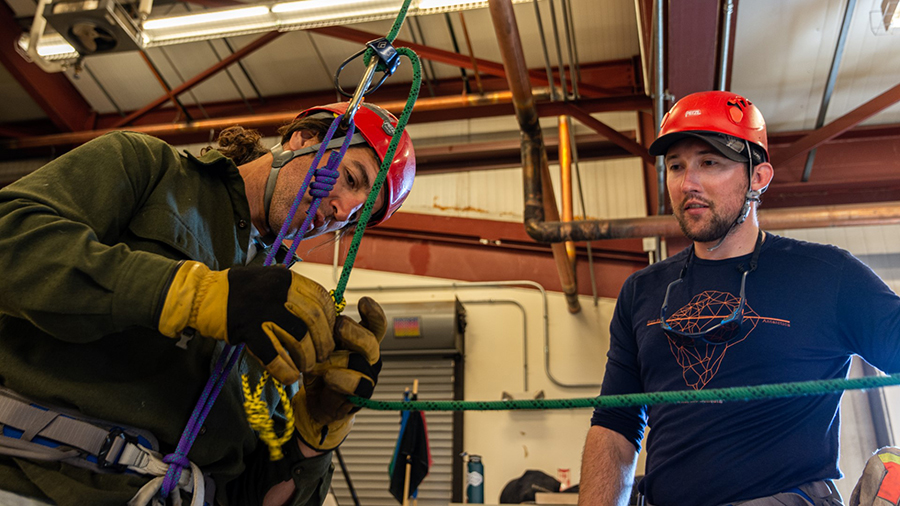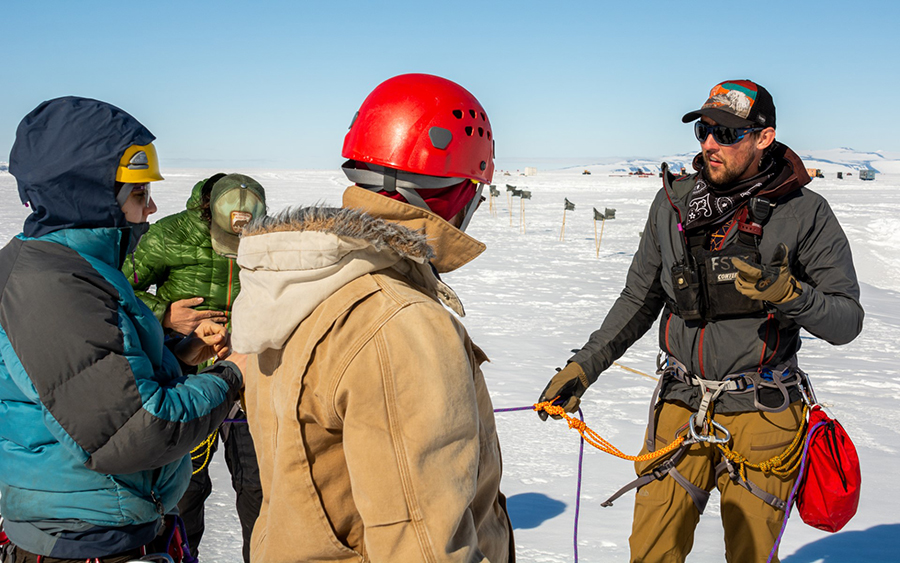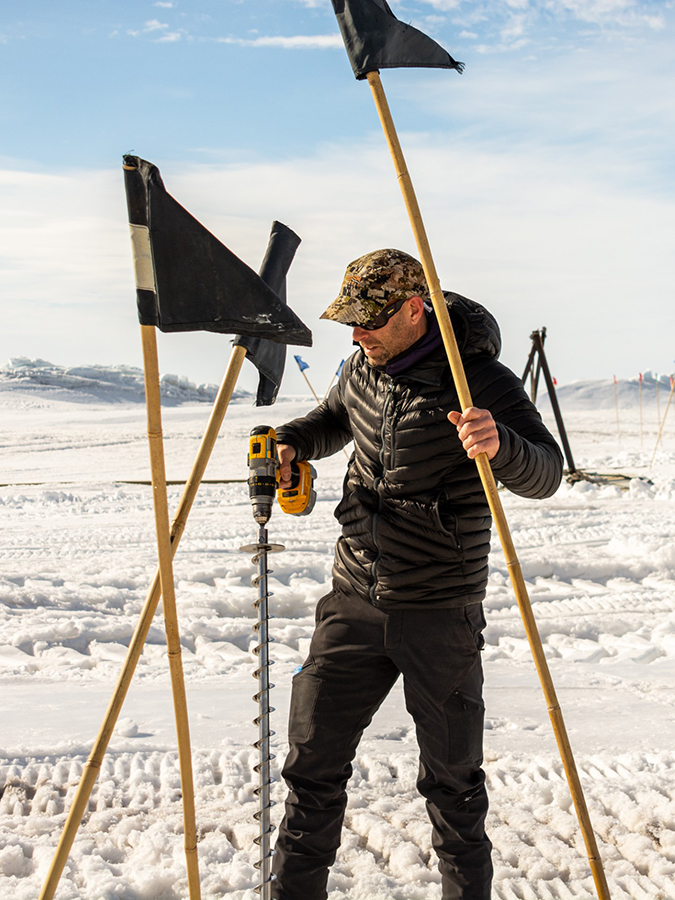
Photo Credit: Mike Lucibella |
Field safety coordinator Philippe Wheelock drives a snowmobile across the ice shelf. Using the flags in tow, he's helping to mark the safe travel routes across the frozen landscape. |
Podcast: Field Support and Training
Making Sure Everyone Returns Safely from the Backcountry
By Michael Lucibella, Antarctic Sun Editor
Posted August 10, 2020

Photo Credit: Mike Lucibella
In a classroom environment, field safety coordinator Mitch Beres (right) helps train Federico Piola on how to correctly wear his climbing harness.
In Antarctica, scientists conduct cutting edge research on a harsh and barren continent. It's no easy task, but to help make it happen, the U.S. Antarctic Program employs small army of support staff to get these researchers the supplies they need, transport them to where they need to go and keep them safe throughout.
A lot of the jobs they do are the same that any small town needs to function, often with a specialized twist that comes with working in such a remote place, but others can be less obvious. The Antarctic Sun Podcast is taking a behind-the-scenes look at the workers and what they do to make science at the bottom of the world possible.
This Episode: Field Support and Training
Antarctica is as big as the continental United States and Mexico combined. It’s utterly inhospitable. Much of the landscape is treacherous, with hidden crevasse fields, steep mountains and cracks in the sea ice throughout. Despite these hazards, hundreds of scientists venture to the frozen to study its unique features. It's the job of the Field Support and Training to keep these researchers safe while conducting their fieldwork.
It's an important job, one which starts long before any scientist sets foot on the continent. Through careful planning, in-depth training and mindful supervision the FS&T team make sure that even when scientists are at a remote site, hundreds of miles away from the safe confines of the station, they're out of harm's way.
Photo Gallery

Photo Credit: Mike Lucibella
Out at McMurdo Station's crevasse simulator, Mitch Beres teaches (left to right) Christina Bovinette, Federico Piola and Peter Pankowsky proper techniques for rappelling down an ice cliff.
|

Photo Credit: Mike Lucibella
At the crevasse simulator, Mitch Beres (left) helps Federico Piola make sense of the complicated tangle of ropes, knots and climbing equipment.
|

Photo Credit: Mike Lucibella
Riding a snowmobile with a load of flags, Mitch Beres drives along one of the ice roads around McMurdo Station making sure the safe routes are clearly marked.
|

Photo Credit: Mike Lucibella
Mitch Beres (left) and Philippe Wheelock carry black flags to a crack in the ice. Black flags mean "danger, do not approach" so that people stay away from potential hazards.
|

Photo Credit: Mike Lucibella
Using a drill to punch a hole in the frozen ground, Philippe Wheelock sets up black flags, marking a hazard by one of the station's ice roads.
|











